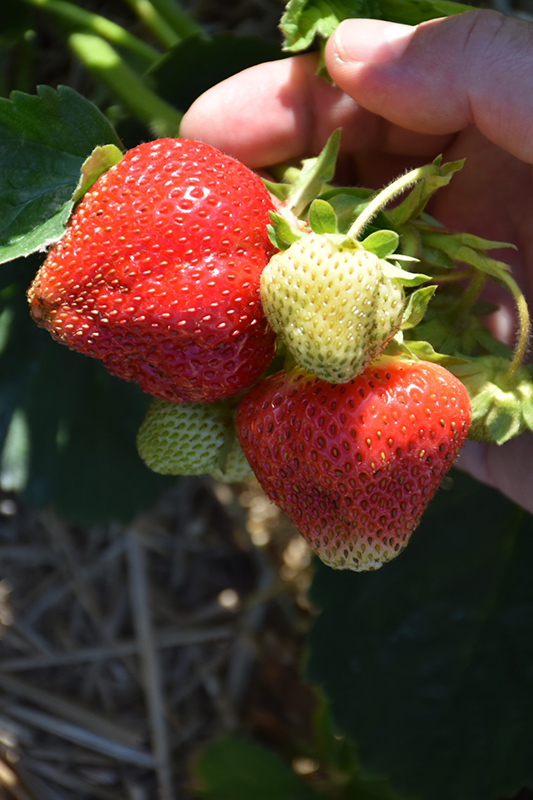Valley Sunset Strawberry
Fragaria 'Valley Sunset'
Height: 14 inches
Spread: 3 feet
Sunlight:
![]()
![]()
Hardiness Zone: 3a
Other Names: Garden Strawberry
Description:
A late season selection, producing medium yields of large berries with firm texture and excellent flavor; produces fruit in the second year; good disease resistance; ideal for gardens, containers, and hanging baskets
Edible Qualities
Valley Sunset Strawberry is a perennial that is typically grown for its edible qualities, although it does have ornamental merits as well. It produces red heart-shaped berries which are usually ready for picking in early summer. This variety is considered a 'June-bearing' type of strawberry, which means that it produces one big crop of fruit at the same time. The berries have a sweet taste and a firm texture.
The berries are most often used in the following ways:
- Fresh Eating
- Baking
- Preserves
Features & Attributes
Valley Sunset Strawberry features dainty white cup-shaped flowers with yellow eyes at the ends of the stems in early summer. Its serrated round compound leaves remain dark green in color throughout the season. It features an abundance of magnificent red berries from late spring to early summer.
This is an open herbaceous perennial with an upright spreading habit of growth. Its relatively fine texture sets it apart from other garden plants with less refined foliage. This is a high maintenance plant that will require regular care and upkeep, and should not require much pruning, except when necessary, such as to remove dieback. It is a good choice for attracting birds to your yard, but is not particularly attractive to deer who tend to leave it alone in favor of tastier treats. Gardeners should be aware of the following characteristic(s) that may warrant special consideration;
- Spreading
Aside from its primary use as an edible, Valley Sunset Strawberry is sutiable for the following landscape applications;
- Border Edging
- General Garden Use
- Groundcover
- Container Planting
Planting & Growing
Valley Sunset Strawberry will grow to be about 14 inches tall at maturity, with a spread of 3 feet. It grows at a fast rate, and under ideal conditions can be expected to live for approximately 10 years. As an herbaceous perennial, this plant will usually die back to the crown each winter, and will regrow from the base each spring. Be careful not to disturb the crown in late winter when it may not be readily seen! This is a self-pollinating variety, so it doesn't require a second plant nearby to set fruit.
This plant can be integrated into a landscape or flower garden by creative gardeners, but is usually grown in a designated edibles garden. It does best in full sun to partial shade. It does best in average to evenly moist conditions, but will not tolerate standing water. It is particular about its soil conditions, with a strong preference for rich, alkaline soils. It is somewhat tolerant of urban pollution. Consider applying a thick mulch around the root zone in both summer and winter to conserve soil moisture and protect it in exposed locations or colder microclimates. This particular variety is an interspecific hybrid. It can be propagated by division; however, as a cultivated variety, be aware that it may be subject to certain restrictions or prohibitions on propagation.
Valley Sunset Strawberry is a good choice for the edible garden, but it is also well-suited for use in outdoor pots and containers. It is often used as a 'filler' in the 'spiller-thriller-filler' container combination, providing a mass of flowers against which the larger thriller plants stand out. Note that when growing plants in outdoor containers and baskets, they may require more frequent waterings than they would in the yard or garden. Be aware that in our climate, most plants cannot be expected to survive the winter if left in containers outdoors, and this plant is no exception. Contact our experts for more information on how to protect it over the winter months.



